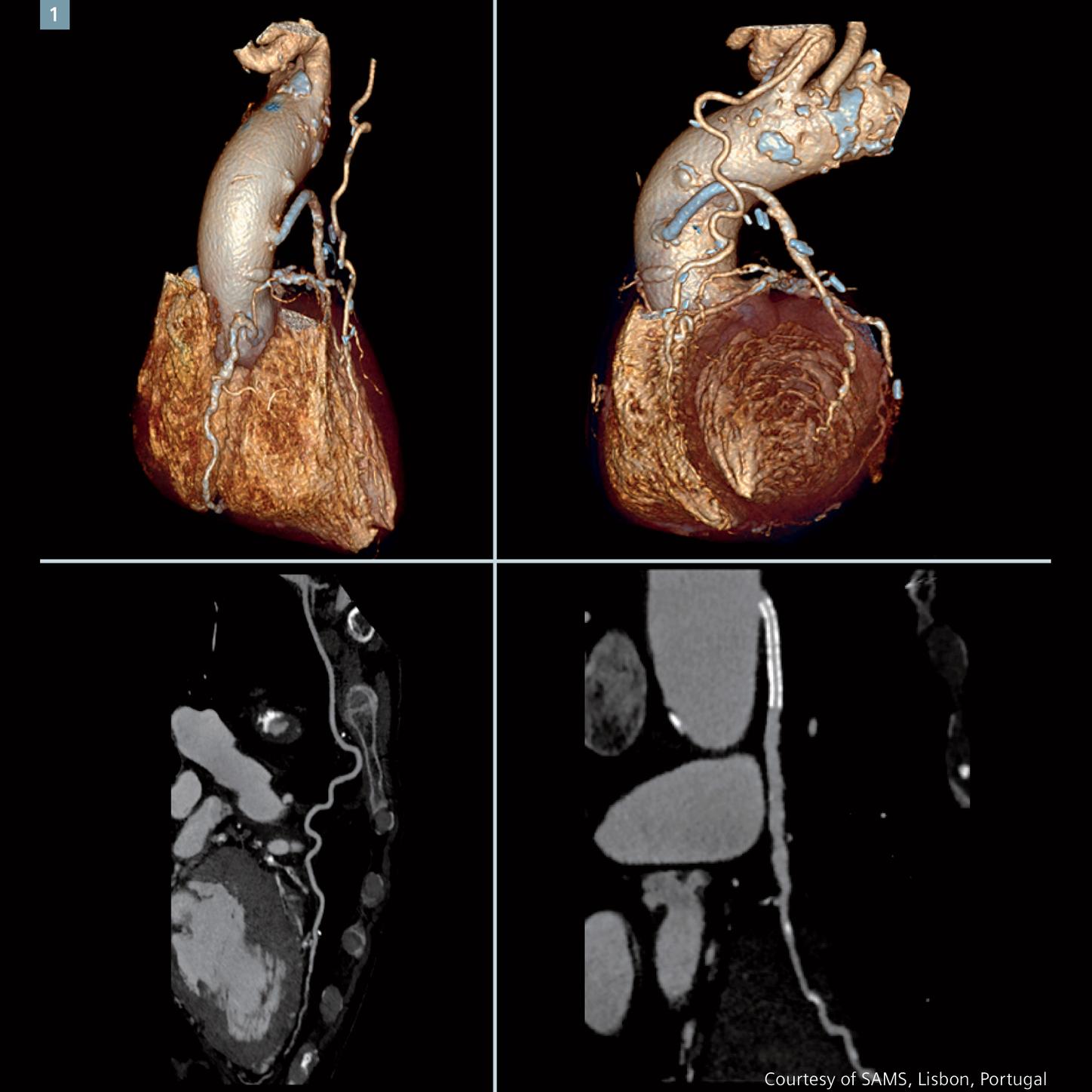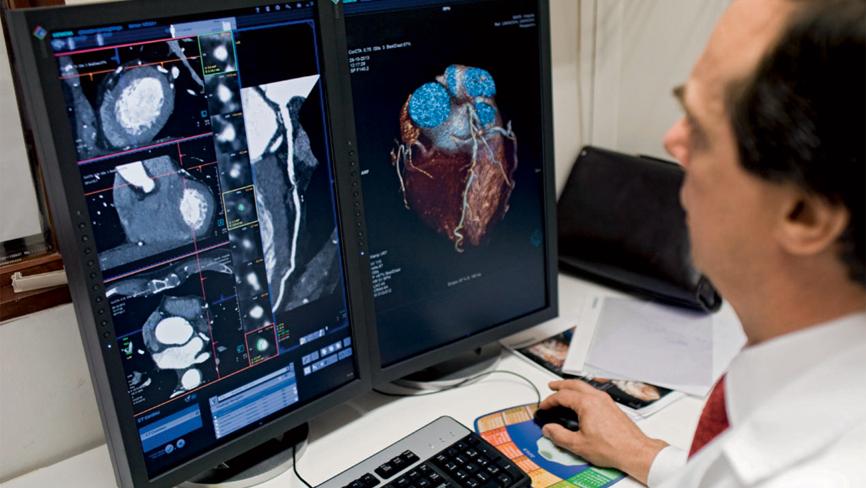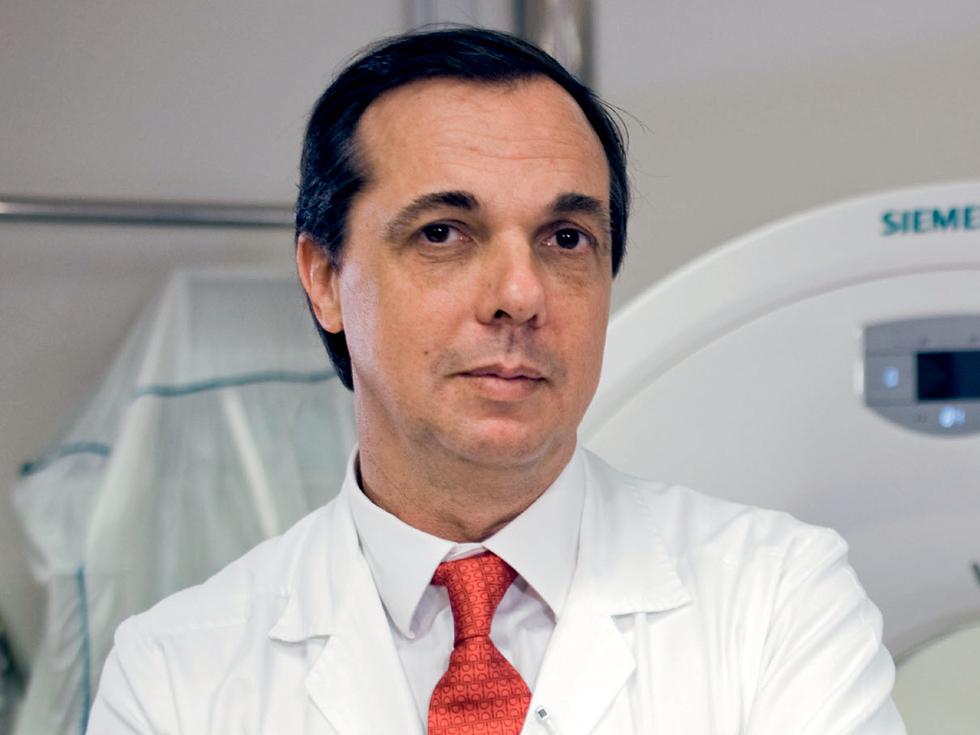Cardiovascular diseases are among the most frequent causes of death worldwide. Innovative diagnostic approaches are becoming increasingly important.
Photos: Miguel Ribeiro Fernandes
At the Portuguese private hospital SAMS in Lisbon, the cardiology department has been using the SOMATOM® Perspective for two years.
Stress, smoking, lack of exercise, unhealthy nutrition, high blood pressure – the factors contributing to cardiovascular diseases are many and manifold. According to the World Health Organization (WHO), coronary and cardiovascular diseases are among the leading overall causes of death the industrialized countries – and the upward trend is continuing especially in developing countries.
In response, many practices and hospitals are permanently aiming to improve their examination methods and diagnostic capabilities. One of them is the Portuguese private hospital SAMS in Lisbon, which purchased a SOMATOM Perspective two years ago.
Reduced radiation dosage

“Due to its excellent image quality and the technical abilities to greatly reduce the radiation dosage with the iterative reconstruction method SAFIRE1, for us the CT scanner is particularly suitable for cardiological CT examinations,” explains Paulo Pedro, MD, head of the cardiology department at the SAMS hospital.
Also, the 128-slice CT scanner offers exceptionally short scanning times, he says, which is particularly important in cardiac CT due to the constant heartbeat. Pedro is enthusiastic about the SOMATOM Perspective: “Especially with ambiguous disease patterns, the CT scanner delivers the better and also the more affordable examination method, and it also helps us avoid exposing patients to risky, yet sometimes unnecessary interventions.”
Especially user-friendly

He hopes to eliminate the reservations of some colleagues who still regard cardiac CT as too complicated and intricate: “Cardiac CT really is not difficult. All it takes is practice, good knowledge of cardiological anatomy, and an appreciation of computer work.” The 53-year-old cardiologist thinks that the SOMATOM Perspective makes handling and diagnostics especially user-friendly thanks to the reading workplace syngo.via Element CT.
The automatic case preparation with syngo.via Element CT accelerates the workflow and allows the doctor to concentrate more on the diagnosis, he says. This not only saves valuable time, which is essential in the case of heart attacks, for instance, but generally also offers more diagnostic confidence, says Pedro.
The scanner not only allows certain and speedy identification of valvular defects, stenosis, and diseased coronary vessels and heart muscles. It has also proven its value in combination with syngo.via Element CT in the exclusion of coronary heart diseases and in the examination of patients after bypass operations, the head cardiologist confirms.
"Cardiac CT really is not difficult. All it takes is practice, good knowledge of cardiological anatomy, and an appreciation of computer work."
Of sequences and spirals
Paulo Pedro favors the approach of spiral scans in combination with the SAFIRE technology, which reduces the radiation dosage through iterative reconstruction: “In this modality, I achieve the ideal balance between radiation dosage and image quality, since a dosage of between 2 and 4 mSv at 110 kV gives me a multiphase image display that reconstructs the beating heart in various phases, which is often necessary in order to be able to distinguish lesions from motion artifacts.” At high heart rates, he applies multiphase spiral CTs, while at lower heart rates, he also uses sequential CTs.
Time for preparation

Although the CT scanner is used by all specialist departments, cardiac exclusively is performed every Monday morning. “This allows me to concentrate better and without time pressure on every patient and also to collaborate more intensively with the radiologist,” says Pedro. This approach, he says, is particularly successful with cardiac CT.
“You need sufficient time and calmness to prepare the patient for the examination. Because if the patient is nervous or stressed with a very high or irregular heart rate, it is difficult to secure significant CT images,” Pedro confirms.
Therefore, preparation is crucial for successful cardiac CT, says the Portuguese cardiologist, who has successfully introduced a six-step system for his CT examinations. Pedro also presents his approach in a step-by-step tutorial video. “Computed tomography will prevail in cardiology and play an increasingly important role. Nobody should shut themselves off from it,” says Paulo Pedro.
About the Author
Manuel Meyer is a writer for the German Ärztezeitung in Portugal and Spain.

